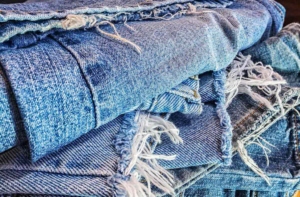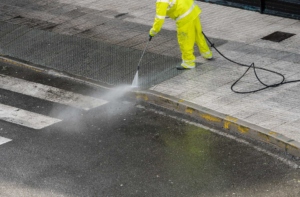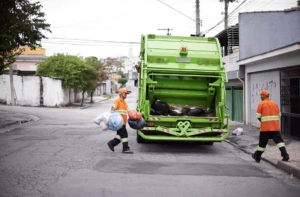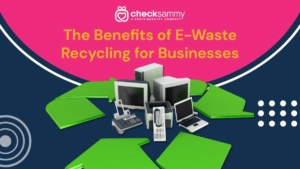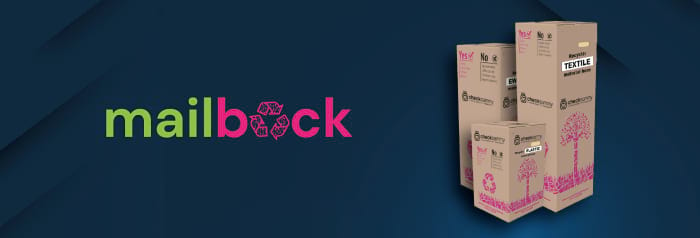Steps to Control Textile Waste in Your Multi-Family Property or Company
Are you considering a textile recycling program for your multi-family property or company? Controlling textile waste is a challenge, and it often requires a multi-pronged approach. Whether you’re considering a program or not, there’s no denying that textile waste is a growing problem.
The average American purchases one new piece of clothing every 5.5 days and throws away 81 pounds of textiles every single year. On average, for every five pieces of clothing produced, three of them will end up in the landfill.
Once in the landfill, textiles can take more than 200 years to break down. While those textiles decompose, they release methane gas into the atmosphere and leach toxic dyes and chemicals into our soil and groundwater.
As fashion continues to get faster and our landfills keep filling up, one thing is clear: we must get a handle on textile waste before it’s too late.
The solution is multi-tiered, but corporate responsibility and textile recycling are critical to getting textile waste under control. Here’s how you can do your part.
4 Steps to Control Textile Waste in Your Company or Property
Step 1: Implement a Textile Recycling Program that Diverts Textiles Away From Landfills.
Not all recycling programs sort recyclables. Instead, they simply pick up whatever is in the bin and take it to the recycling center. The problem is that much of what goes into those recycling bins can’t be recycled unless they are sent to specific facilities designed to recycle those items.
So, anything that a recycling center can’t recycle goes to the landfill. As a result, you may think you’re recycling your waste when it’s actually headed to the landfills after all. That’s why it’s so essential to create a program that is specifically designed to divert textiles away from landfills —and can prove it.
Step 2: Pair Education With Your Textile Recycling Program.
Education is how you can ensure your program actually gets used. This is especially important for multi-family residences where tenants might be unfamiliar with the need for and process of textile recycling.
Step 3: Choose a Community Partner That Works on a Local Level.
There’s clothes recycling, and then there’s the option to donate old clothes. If possible, donations are usually the best route.
Working with a community partner is a great way to coordinate with local charities and secondhand shops. It enables you to have a clear path to extend the life of usable textiles through donations while simultaneously contributing to your community.
Step 4: Get Authenticated, Verifiable, Unalterable Data.
To gauge the impact of your textile recycling program, you need to know where your textiles end up. Too often, programs claim they’re sustainable but have no way to prove it.
For example, a major recycling company, which claims it can “recycle everything,” recently came under fire for its inability to prove it actually recycles the products it collects.
Plus, when there’s no visibility into the recycling process, you have no data to use for your portfolio manager and ESG reporting. And even when you have ESG data, research has found that much of it tends to be misleading, with many companies proving not to be as sustainable as their reports claim.
Greenwashing is rampant, and to prove your textile recycling program is doing what you say it’s doing, you need to ensure you have authenticated, verifiable, and unalterable data.
Getting Started with Textile Recycling
Textile waste is a massive problem, but companies and multi-family properties can do their part to mitigate the crisis by creating a comprehensive clothes recycling program. By following the steps above, you can implement a successful textile recycling program and be a part of the solution.
At CheckSammy, we create customizable textile recycling solutions for any enterprise or multi-family unit based on their unique needs. We also help provide community education with our SmartBAGS and other products. Contact us today to learn more.
See Our Services
Create a custom solution to meet your waste and sustainability goals. Contact us today!
Continue reading
Dive deeper into the CheckSammy Blog by reading one of our posts below
Feeling the Pain of Higher Resident Turnover? Apartment Junk Removal Can Help
If you’re a property manager, you’ve probably had a significant increase in tenant turnover over the last couple of years. So it’s no wonder apartment junk removal may be top of mind for you right now. There are several reasons for this shift. For one, the housing market is on fire right now. In 2020 […]
Read More About Feeling the Pain of Higher Resident Turnover? Apartment Junk Removal Can HelpSetting Up a Community E-waste Recycling Program
E-waste is the fastest-growing municipal waste stream according to the EPA, yet e-waste recycling isn’t keeping pace. In fact, only 12.5% of all e-waste is recycled, reports the EPA. Starting a community e-waste recycling program is a terrific way to ensure hazardous e-waste, like lithium-ion batteries, doesn’t end up in your community’s landfill. Creating an […]
Read More About Setting Up a Community E-waste Recycling ProgramWaste Management’s Role in the Circular Economy
Establishing a waste management program for your business or community is one of the best ways you can contribute to the circular economy. Here’s everything you need to know about waste management’s role in the circular economy (and how to get involved). What Is the Circular Economy? Our current economic model is all about taking […]
Read More About Waste Management’s Role in the Circular Economy5 Reasons to Consider a Textile Recycling Program for Your Organization
Americans sent more than 17 million tons of textiles to landfills in 2018, a volume that is only increasing every year, reports the Environmental Protection Agency. When you think about the fact that it can take over 200 years for textiles to decompose, it’s easy to grasp how large textile waste’s contribution is to the […]
Read More About 5 Reasons to Consider a Textile Recycling Program for Your Organization8 Benefits of Environmentally Friendly Power Washing Services
If you’re into maintaining the curb appeal of your business or home, then you’ve probably heard of pressure washing. Pressure cleaning involves using high-pressure water spray to remove grime, mold, dust, paint, mud, and other junk from objects or surfaces. Many people worry that pressure washing isn’t good for the environment, but this couldn’t be […]
Read More About 8 Benefits of Environmentally Friendly Power Washing ServicesWhy Our Customers Love Our Full-Service Junk Removal
If you’re looking for full-service junk removal services, you’ve come to the right place. CheckSammy is a one-stop shop for all your junk removal and sustainability needs. From our affordability, simplicity, and unrivaled turnaround times to our innovative sustainability solutions and patented technology and data, it’s clear why some of North America’s biggest companies choose […]
Read More About Why Our Customers Love Our Full-Service Junk RemovalTips for a Stress-Free Move From An Eco-Friendly Junk Removal Company
What does an eco-friendly junk removal company know about moving? Quite a lot, actually. Moving can be an especially chaotic time. You have to pack everything up, get rid of unwanted items, clean your property, load everything up, and move your things to your new location. That doesn’t even include the unpacking and resettling period. […]
Read More About Tips for a Stress-Free Move From An Eco-Friendly Junk Removal CompanyCollege Junk Removal Tips for Student Move-In Day
As the new school year gears up, colleges across the country are looking for ways to clean up their campuses before the new year begins, and many of them want to do so sustainably. College junk removal isn’t easy, though, especially around move-in week—and when trying to do so sustainably. As students move in and […]
Read More About College Junk Removal Tips for Student Move-In Day8 Items Hospitality Businesses May Not Know They Can Recycle
One hotel guest produces 2.5 pounds of trash every single day. Just a single hotel room produces around one cubic yard of waste each month, which totals 200 gallons of waste per room every month. Most of this waste goes straight to the landfill, even though research shows that up to 60% of it is […]
Read More About 8 Items Hospitality Businesses May Not Know They Can Recycle


